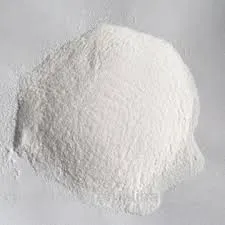
снеж . 04, 2024 09:08 Back to list
hydroxypropyl methyl cellulose in supplements
The Role of Hydroxypropyl Methylcellulose in Dietary Supplements
Dietary supplements are widely used to support overall health, enhance physical performance, and fulfill nutritional gaps. Among the various ingredients found in these supplements, hydroxypropyl methylcellulose (HPMC) is gaining attention due to its unique properties and potential benefits. This article aims to explore what HPMC is, its applications in dietary supplements, and its advantages over other substances.
What is Hydroxypropyl Methylcellulose?
Hydroxypropyl methylcellulose is a semi-synthetic polymer derived from cellulose, a natural component of plant cell walls. The chemical structure of HPMC makes it soluble in water and capable of forming a gel-like consistency, which adds to its usability in various applications. It is commonly recognized as a thickening agent, emulsifier, and stabilizer, making it a versatile component in many industries, including food and pharmaceuticals.
Applications in Dietary Supplements
In the context of dietary supplements, HPMC serves multiple functions. It is often utilized as a vegetarian alternative to gelatin for capsule manufacturing. Many consumers are seeking plant-based products, and HPMC fulfills this demand effectively, providing a suitable option for those following vegetarian or vegan diets. This has made HPMC particularly popular among supplement manufacturers aiming to cater to a broader audience.
Additionally, HPMC is employed to enhance the texture and stability of powdered supplements. It can help prevent clumping, ensuring a smooth product that is easy to mix and digest. Its gel-forming properties also aid in the slow release of active ingredients, which can improve the bioavailability of certain nutrients or compounds, allowing for more effective absorption in the body.
hydroxypropyl methyl cellulose in supplements

Benefits of Hydroxypropyl Methylcellulose
One of the key advantages of HPMC is its multifunctionality—acting as a thickener, binder, stabilizer, and emulsifier. This versatility helps manufacturers optimize formulations, enhancing the overall effectiveness of their products. Unlike other thickeners or stabilizers, HPMC is less likely to interact negatively with active ingredients, minimizing the risk of degradation and ensuring a longer shelf life.
Moreover, HPMC is recognized for its safety profile. As an ingredient approved by various health authorities, including the FDA, it is generally considered safe for consumption. This has led to its widespread adoption in the dietary supplement industry, where safety and efficacy are paramount. HPMC is also lactose-free, gluten-free, and non-allergenic, making it an excellent option for individuals with dietary restrictions or sensitivities.
Conclusion
Hydroxypropyl methylcellulose is emerging as an essential ingredient in dietary supplements, thanks to its multiple functionalities and safety profile. With the growing trend toward vegetarian and vegan lifestyles, HPMC provides a valuable alternative to gelatin and other animal-derived substances in capsule production. Its role in enhancing product stability and bioavailability further underscores its importance in supplement formulations.
As consumers increasingly demand transparency and quality in their nutritional products, the incorporation of HPMC in dietary supplements is poised to grow. Manufacturers that leverage the benefits of HPMC may find a competitive edge in a crowded market. Overall, HPMC is not just a passive ingredient but an active contributor to the efficacy and safety of dietary supplements, making it a noteworthy subject for anyone interested in nutrition and health.
In conclusion, hydroxypropyl methylcellulose exemplifies how innovative ingredients can enhance dietary supplements, offering both functional benefits and appealing to consumers' preferences for plant-based products. As research continues and consumer needs evolve, HPMC will likely play a significant role in shaping the future of dietary supplementation.
-
Versatile Hpmc Uses in Different Industries
NewsJun.19,2025
-
Redispersible Powder's Role in Enhancing Durability of Construction Products
NewsJun.19,2025
-
Hydroxyethyl Cellulose Applications Driving Green Industrial Processes
NewsJun.19,2025
-
Exploring Different Redispersible Polymer Powder
NewsJun.19,2025
-
Choosing the Right Mortar Bonding Agent
NewsJun.19,2025
-
Applications and Significance of China Hpmc in Modern Industries
NewsJun.19,2025







